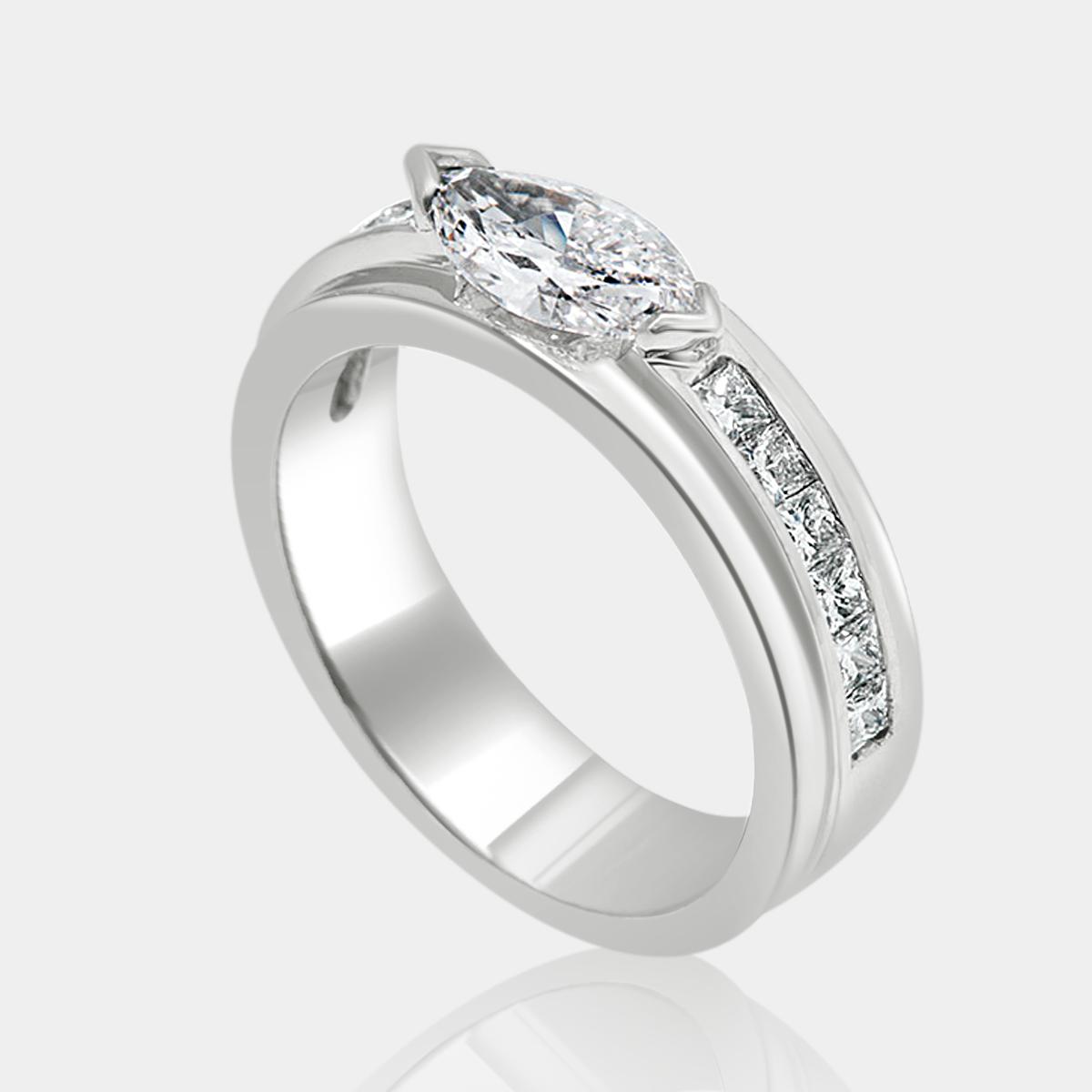Choosing the Right Precious Metal for Your Jewellery
Selecting the right precious metal for your jewellery often comes down to personal preference and budget. Here’s a guide to help you understand the key differences between popular options, including gold, white gold, platinum, and sterling silver.
Gold: 9ct vs. 18ct
Gold comes in various forms, primarily 9ct and 18ct. The difference between these types lies in their gold content and the alloys mixed with them.
9ct Gold
9ct Gold contains 37.5% pure gold, mixed with other metals such as silver and copper. This blend affects its colour and durability. Contrary to popular belief, 9ct gold isn’t necessarily harder than 18ct gold. The hardness of gold alloys is generally similar because the additional metals used in both 9ct and 18ct gold have comparable hardness properties.
18ct Gold
18ct Gold, on the other hand, contains 75% pure gold and fewer alloy metals. This higher gold content makes 18ct gold denser and more durable. It handles impacts better, tends to dent rather than crack, and is generally heavier. Due to its higher gold content and durability, 18ct gold is more expensive than 9ct gold.
When it comes to colour, 9ct gold usually appears slightly lighter. For example, 9ct yellow gold is often paler than 18ct yellow gold. The same principle applies to white and rose gold: 9ct versions are less intense in colour compared to their 18ct counterparts.
White Gold: Palladium and Rhodium
White gold is an alloy of yellow gold mixed with metals such as silver, palladium, nickel, and manganese. This blend gives white gold its distinct yellow-white hue, but it will never achieve a pure white colour. To enhance its whiteness, white gold is often plated with rhodium. This plating helps achieve a more vibrant white finish but wears off over time, requiring re-dipping every year or two to maintain its appearance.
DDS Direct Diamond Design Studios opts for high-quality white gold enriched with palladium, which results in a more vibrant white without nickel. Although rhodium plating is still applied, the palladium-rich composition reduces the impact of rhodium wear. Lower-quality white gold containing high levels of nickel may show a yellowish tint once the rhodium wears off, which can be disappointing to customers. DDS ensures that only the highest quality gold is used to avoid this issue.
Platinum: A Unique Choice
Platinum offers a distinct alternative to white gold. It has a naturally greyish-white tone and does not change colour over time. Unlike white gold, platinum does not require rhodium plating. However, it can lose its shiny finish and become dull over the years. Some people prefer this less shiny look because it allows diamonds to stand out more.
Platinum is denser and heavier than gold, making it more expensive. Its rarity—only a few hundred tons are produced annually—contributes to its high cost. Additionally, platinum is used in various industries, increasing its demand and value. When used in jewellery, platinum is typically 95% pure.
Consistency in metal choice is important when selecting rings. It’s advisable to match the engagement ring, wedding ring, and eternity ring in the same metal to avoid noticeable colour differences.
Sterling Silver (925): A Popular Yet Limited Option
Sterling silver, often labelled as “925,” consists of 92.5% silver and the remaining percentage is mainly copper. Pure silver, at 99.9%, is too soft for practical use, so alloying it with copper makes it more suitable for jewellery. Despite this, sterling silver is softer compared to the aforementioned metals.
Sterling silver is not typically used for setting precious stones due to its tendency to oxidise and tarnish over time. This makes it less ideal for jewellery that needs to endure the test of time, such as engagement and wedding rings.
Conclusion
Choosing the right metal for your jewellery involves considering factors such as durability, appearance, and cost. 18ct gold offers superior durability and a richer gold content compared to 9ct gold. White gold, particularly with high-quality palladium, provides a beautiful white finish, though it requires periodic maintenance. Platinum offers a unique, enduring choice but at a higher cost. Sterling silver, while popular and more affordable, is not as durable and is best suited for less frequently worn pieces.
By understanding these characteristics, you can make an informed decision that best suits your personal taste and budget.

